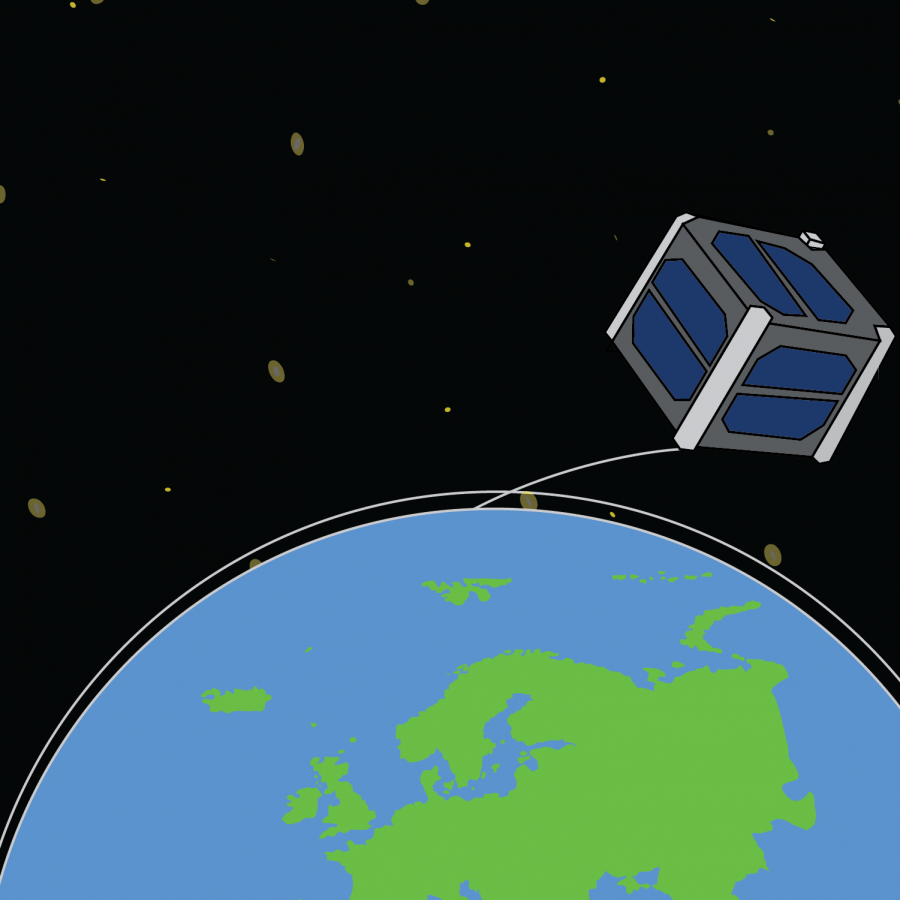CAPSat revolutionizes space research
Nov 15, 2018
We live in a world where space research has become a goal for multiple corporations. From Elon Musk’s SpaceX project to Lockheed Martin’s Orion spacecraft, unravelling the mysteries of the world beyond the exosphere has taken precedence over other scientific research, and justifiably so.
Earth has sustained human life for over 100 millennia; eventually, there will come a time when our species will have to bid farewell to this planet and migrate to a new one. This is where our generation’s effort in space exploration will pay dividends down the line.
Bringing humanity closer to a goal of heightened understanding of the universe is the CAPSat mission: a project that is being brought to completion by University programs like the aerospace engineering department, industrial and systems engineering and the physics department. The CAPSat is a CubeSat that aims to solve or improve the capabilities of larger satellite systems in the future.
So, what exactly is a CubeSat?
A CubeSat is essentially a miniaturized satellite for space research that is typically very light and compact. What makes the CAPSat unique from other satellites in its market space is its capacity to house three scientific instruments.
Get The Daily Illini in your inbox!
Eric Alpine, senior in Engineering and lead project manager for the mission, said the CAPSat is revolutionary in its own right.
“The CubeSat is a 3U system, which is relatively small for the number of science instruments that it supports. It really is a first of its kind,” Alpine said.
The three-payload system is integral to CAPSat functioning. Responsible for the pointing payload technology is James Allison, professor in Engineering.
“Controlling the orientation of a satellite in space is often overlooked, and a lot of the current pointing technology has reliability issues,” Allison said.
Another vital role of the pointing payload is its ability to capture images efficiently.
“It’s an enabling technology if you want to see farther into space, hold pictures for longer periods of time or get better exposure,” Allison said.
The CAPSat also uses two other technologies, namely the cooling and annealing payloads. The cooling system aims to alter the physical and chemical properties of the satellite and ensures that its circuits are able to adapt to the spatial environment around them.
This leads to greater ductility and easier workability for the bus manufacturing team of the project. Furthermore, the annealing payload is particularly interesting since it uses a single photon technique to extend the lifetime of sensors important to quantum entanglement experiments.
This is a fascinating development, and researchers from the University and Bradley University are currently working on optimizing this process.
Long gone are the days when fuel was the primary source of energy in satellites. Most spacecraft today have solar arrays that allow them to directly harness energy from the sun, hence minimizing costs and leading to more efficient research.
The CAPSat deploys two panels, one of which integrates five arrays in total. Describing the solar array incorporation process, Alpine said, “The fact that we’re able to use arrays in a CubeSat is testament to how hard the CAPSat team has worked over the past few years.”
Overseeing a team of roughly 20 people, Alpine describes his group’s involvement.
“We make design decisions, purchase parts for electronics boards, review said designs, perform environmental testing to ensure survivability in the space environment, oversee payload assembly and integrate the satellite system,” Alpine said.
As the go-to person for project development, Alpine said his role has evolved from when he first started on the venture.
“My main responsibility is ensuring that every possible component fits, communicates and operates as to satisfy the scientific objective,” Alpine said. “If this is not the case, I must apply resources to ensure that any technical complications are corrected.”
Although the CAPSat was meant to be launched in June 2018 by NASA, the deadline has been extended to October 2019 due to some minor setbacks.
“The design and development of a mission is really a team sport where everyone has a role to fulfill, and if we lose one of those roles, it will jeopardize the mission,” Alpine said.
Alpine is confident in his team’s progress overall and hopes to advance space research at the commencement of the project.
“Everyone I work with is passionate about space systems and the mission at hand. They drive the system closer to success each day,” he said.






